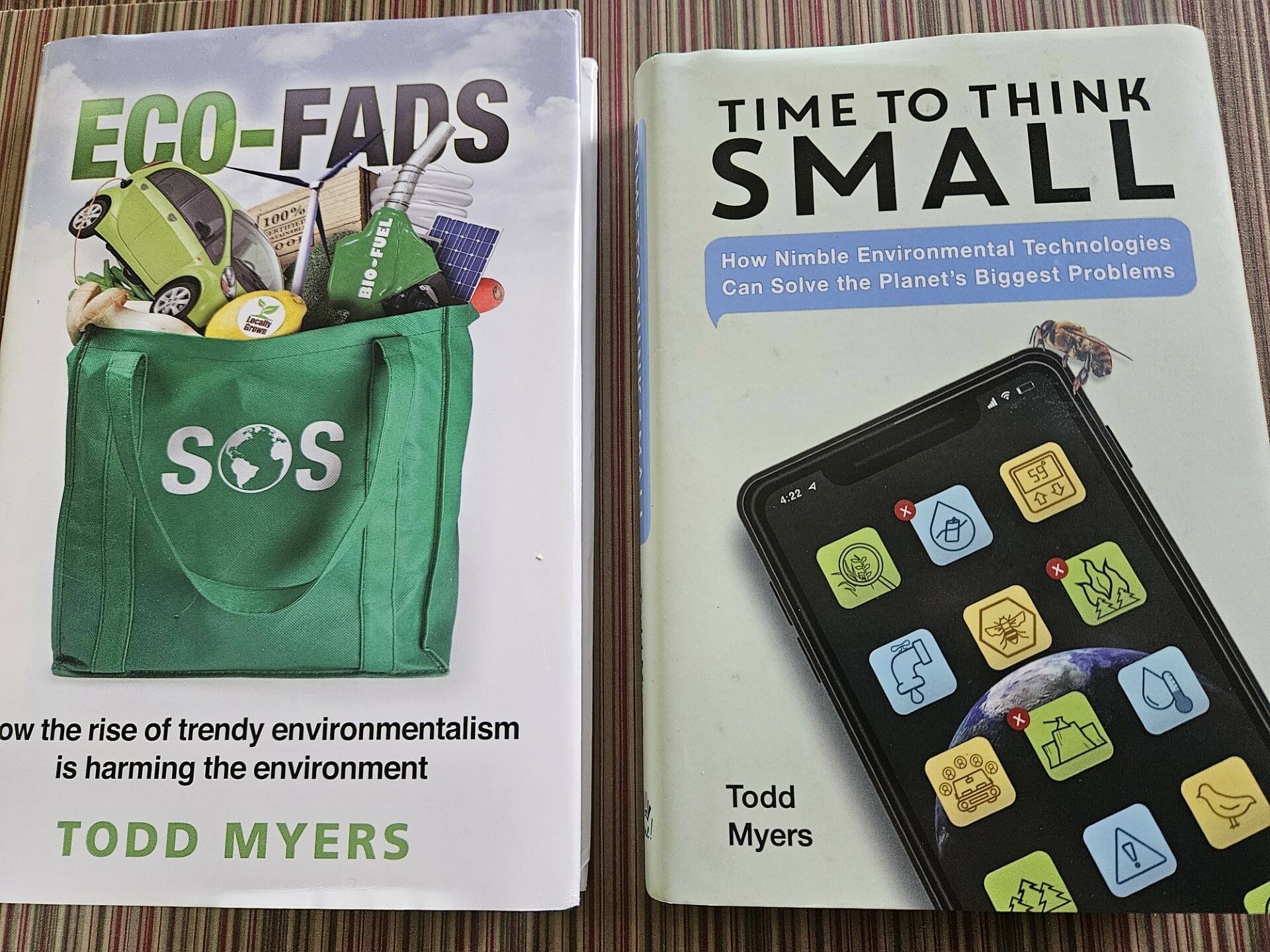I vividly remember the very first Earth Day: April 22, 1970. I was a graduate student in journalism at Stanford University. Denis Hayes, also a Stanford student, organized the original celebration. As a young environmentalist, I was inspired.
So I bought 50 little clear plastic sandwich bags and filled each one with a handful of dirt. I tied them closed with a green ribbon and handed them out to students, professors and staff. “It’s Earth Day,” I said. “Here’s a bag of earth.” Most of them looked at me like I was crazy. Which I was, in a way. After all, it was the Seventies!
To my credit, I also organized a “Turn In Your Newspapers” drive at the company where I had a part-time job. Every week, employees would bring in a stack of their old newspapers and a local recycling company sent a truck to pick them up. There were no curbside pickup programs at that time, but we collected hundreds of papers and everyone liked the idea.
Those were two early examples of things one individual could do to help the environment. Granted, one was largely symbolic, the other reasonably effective.
Today, 55 years later, we are facing similar choices. What policies and programs can actually help the environment, rather than just “virtue signaling” to make us feel good about ourselves?
Todd Myers, vice president and environmental director at the Washington Policy Center, offered some answers at Mercer Island Rotary last week. I had invited Myers to speak. He’s an old friend and I’m a former vice president of the WPC, a respected free-market think tank. Myers looks at the actual results of policies rather than just their intentions. The latter may be well-meaning but can be ineffective and even counterproductive.
Myers has spent decades forming his beliefs. A graduate of Whitman College with a bachelor’s degree in politics, plus a master’s degree in Russian studies from the UW’s Jackson School, Myers went to work for the Washington State Department of Natural Resources and became a member of its executive team. He was also a member of the Puget Sound Salmon Recovery Council and is a beekeeper with 200,000 honeybees. He writes regularly on environmental issues in The Wall Street Journal, USA Today and The Seattle Times, and has appeared on CNN, Fox News and the BBC.
Myers has written two excellent books: “ECO-FADS – How the rise of trendy environmentalism is harming the environment” (2011), and “Time to Think Small – How Nimble Environmental Technologies Can Solve the Planet’s Biggest Problems” (2022). Both are enlightening reading.
I told my fellow Rotarians that Myers was the smartest environmentalist I’d ever met, and I knew a lot of them. After leaving Stanford, I became the environmental reporter at Congressional Quarterly in Washington, D.C. I covered passage of all the major environmental bills of the early 1970s — clean water, clean air, strip mining, marine mammals, wilderness preservation, clearcutting limits, and others. They were all vital pieces of legislation and won wide public support. But times change. Big top-down government regulations and bureaucratic oversight may not provide the best answers today.
I thought he would be a timely speaker with Earth Day approaching. Myers did not disappoint. His speech was titled: “Environmental Stewardship in a Time of Extreme Partisanship.” He began by joking: “I may offend everyone in this room today.” He might have offended a few, but he certainly got everyone to think.
Myers described a disturbing number of well-intentioned environmental efforts that failed and may have done more harm than good. That’s a difficult case to make when emotions run strong and people insist they’re right and others wrong.
“The environment has become too partisan,” Myers said. “Fundamentally we need to connect people more directly to environmental concerns rather than outsourcing them to government.” He offered several examples:
• Quinault Timber Harvest. The federal Bureau of Indian Affairs ran it based on maximizing revenues, so they “harvested like crazy,” but didn’t encourage reforestation. The tribe took it over and the forests are recovering sustainably, with regular environmental assessments. “Stewardship is most effective when it’s done at the local level,” said Myers. “If you’re on the ground, you have better knowledge and better incentives.”
• Environmental Report Card. “In Washington state, despite the fact that we talk about how great we are on the environment, our results are actually very poor,” Myers said. “Under Governor Inslee, our state’s total CO2 emissions actually went up. Despite spending all this time and money, what we have done has failed.”
• Solar Electric Vehicle Chargers. Funded primarily by the state, they cost about 5 times as much as chargers connected to the standard electric grid. But in the winter, they provide only 40 miles of charge per day, while regular chargers offer unlimited power year-round. In Washington state, Myers noted, 90% of our electricity is carbon free because it’s from hydro, nuclear, and wind sources. “There are so many other things we could do with that money that would truly help the environment,” Myers said.
• Rooftop Solar Panels. During Q&A, one Rotarian said that she had installed solar panels on her home so her electricity bill is zero. Myers responded: “That’s because I’m subsidizing your solar panels.” He noted that electricity from solar panels costs about 14 cents per kilowatt hour, while the normal cost is only 4 cents per kilowatt hour. “Western Washington is literally the worst place in the country for solar panels,” according to the National Renewable Energy Laboratory, he said. The reason people with solar panels – including him – earn money is because of high taxpayer subsidies, not because solar panels are efficient.
Myers offered several other compelling examples of how smarter choices can help the environment more efficiently at far less cost. “We need to get more bang for the buck,” he said. “We now have the technology and the tools. We have incredible opportunities. We just need to take action.”
On Earth Day and every day, we should all find something to do that will actually make a difference. Hand out baggies of earth? Probably not. But hey, if you’re reading this in print, you can at least recycle this newspaper!
–
John Hamer (jhamer46@gmail.com) is a former editorial writer/columnist for The Seattle Times and co-founder of the Washington News Council. He tries not to throw dirt at anyone, literally or figuratively.




